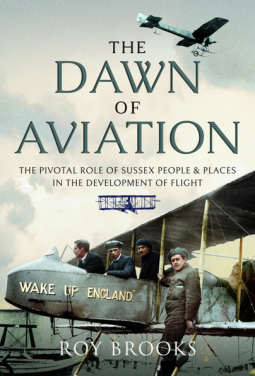
The Dawn of Aviation
The Pivotal Role of Sussex People and Places in the Development of Flight
by Roy Brooks
This title was previously available on NetGalley and is now archived.
Send NetGalley books directly to your Kindle or Kindle app
1
To read on a Kindle or Kindle app, please add kindle@netgalley.com as an approved email address to receive files in your Amazon account. Click here for step-by-step instructions.
2
Also find your Kindle email address within your Amazon account, and enter it here.
Pub Date May 30 2021 | Archive Date May 05 2021
Pen & Sword | Air World
Talking about this book? Use #TheDawnofAviation #NetGalley. More hashtag tips!
Description
Shoreham airport, founded in 1910, is the oldest airport in the UK and the oldest purpose-built commercial airport in the world. Yet aviation began in Sussex far earlier, with balloonists making landfall at Kingsfold near Horsham in 1785.
These early activities attracted much attention, with some 30,000 people gathering at Black Rock in Brighton, as well as on the surrounding hills, to watch the first balloon ascent from the town in July 1821 – using coal gas from the recently opened gas works. That particular balloonist, Charles Green, later became immortalised by Charles Dickens in his Sketches By Boz.
The military were quick to appreciate the potential benefits of aerial observation and in 1880 balloons were deployed for the first time at the annual Volunteer Review at Brighton. Often wind conditions were not favourable for balloons, which prompted the army to consider employing kites and in June 1903 an international competition was held on the South Downs near Findon to see if kites could lift a man into the air. While this was found to be possible, it proved a terrifying experience for the unfortunate pilots.
Before powered flight became a reality, it was gliders which were the first heavier than air machines to take to the skies. In 1902 Mr Jose Weiss began launching unmanned gliders off a ramp at Houghton Hill near Amberley, which flew up to two miles. But soon the internal combustion engine made powered, controlled flight a reality and on 7 November 1908, Alec Ogilvie flew a Wright Brothers biplane along the coast at Camber.
By the time war broke out in 1914, the people of Sussex had seen the Brooklands to Brighton air race and the establishment of flying schools at Shoreham and Eastbourne. After the Armistice, aviation started becoming increasingly expensive and increasingly regulated. The halcyon days of swashbuckling amateurs taking to the skies in untested contraptions was drawing to a close.
Available Editions
| EDITION | Hardcover |
| ISBN | 9781526786340 |
| PRICE | £30.00 (GBP) |



